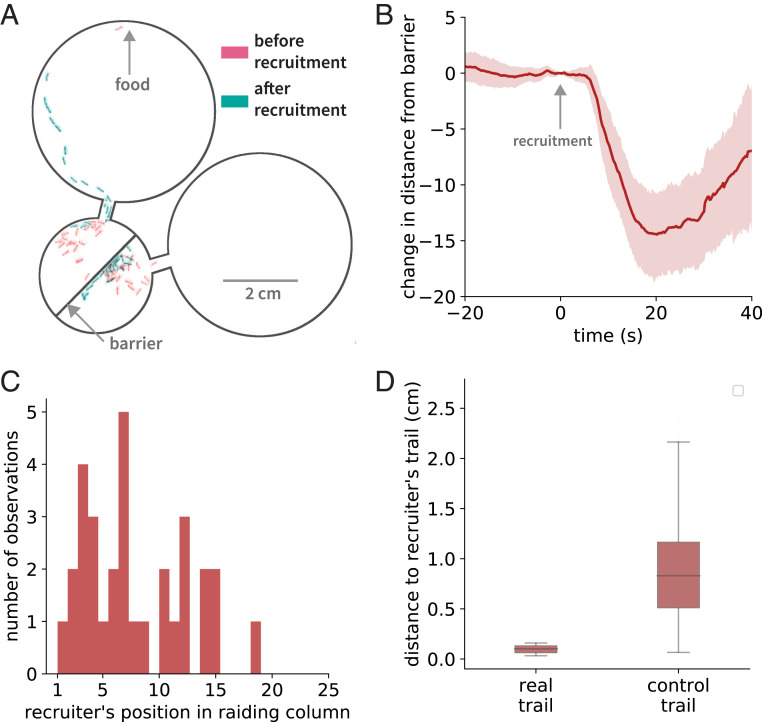Fig. 3.
A trail and a recruitment pheromone determine the spatial and temporal structure of group raids, respectively. (A) The recruitment pheromone is attractive and acts at a distance. The image shows a modified nest with a porous barrier down the middle. On the left side, a scout releases recruitment pheromone, causing the ants to leave the nest. The ants on the right side, meanwhile, run toward the barrier instead of leaving the nest. (B) The distance between the barrier and the center of mass of ants on the side opposite to that of the scout as a function of time since recruitment. The center of mass travels toward the barrier after recruitment, which shows that the recruitment pheromone is attractive (n = 31 raids, error band shows 95% CI of the mean). (C) A histogram of the scouts’ position in the raiding column shows that scouts do not typically lead raids. (D) The outbound trajectories of responding ants are significantly closer to their scout’s inbound trajectory than they are to trajectories of scouts in other group raids (see Methods), showing that the responding ants indeed follow their scout’s trail to the food (n = 31 raids, two-sided Welch’s t test t = 22.77, P < 7 × 10−29).

